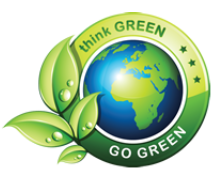How Ice Rinks Work: Ice making and painting
December 15th, 2015
CTC, "The Ice and Snow Specialists from Canada", have completed more than 100 projects in their 15 years in Asia. Within the construction of our most recent ice rink "Qingdao Rio Carnival - Polar Bear ice world" we closely observed the certified Ice Master Team for the 3 days of the ice making process. This process requires great expertise and accuracy, in this report, we tell you 'How it’s Done'.
The process
Making an ice rink is not as simple as flooding the floor with gallons of water. The Ice Master Team must apply the water carefully and slowly, layer by layer, in order to insure the ideal thickness. An ice surface that is too thick requires more energy to keep frozen and is prone to getting soft on the top. A surface that is too thin is dangerous because skaters risk cutting straight through the ice.
It takes between 45,000 to 57,000 litres of water to form a hockey rink surface (60m x 30m, at one-inch thickness). and if the water is demineralized, the ice surface will be more clear and faster to skate on.


The ice is formed in several different layers, through many steps:
-
1) The Ice Master Team sprays the first two layers using a standard water hose. A fine mist of water is created for the first layer. The mist freezes almost immediately after it is sprayed on.
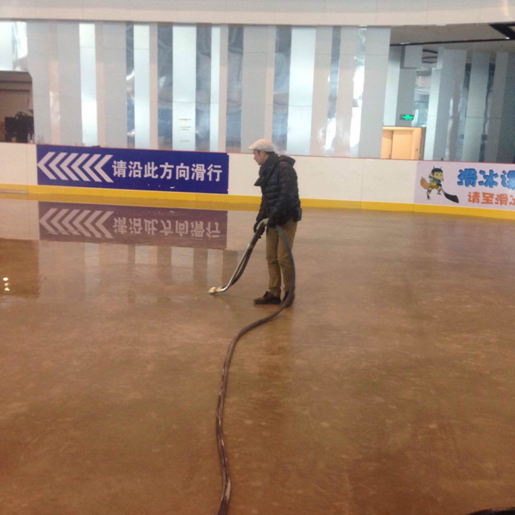
Afterwards, the Ice Master Team flood the ice rink in uniform direction, from left to right. The same procedure is done after in the opposite direction. What is very important at this point is to make sure that the water joins the layer made from the previous flood.


-
2) Once the first layer is frozen, the Ice Master Team spary the second layer white with a paint spray system, allowing for a strong contrast between the black hockey puck and the ice.
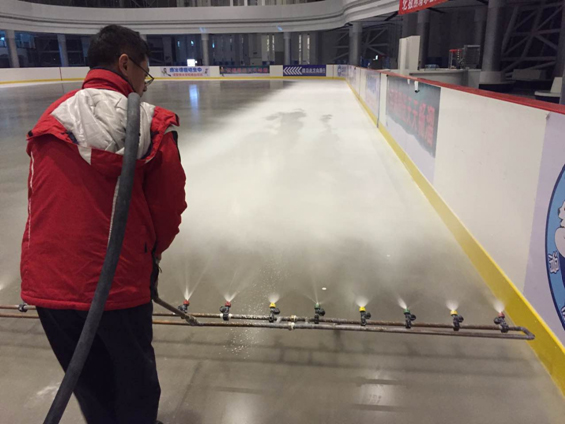
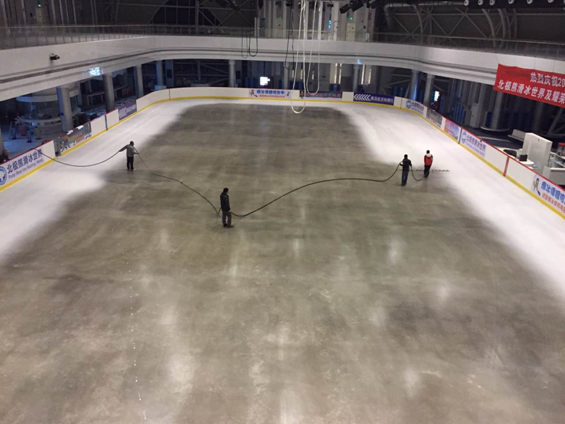
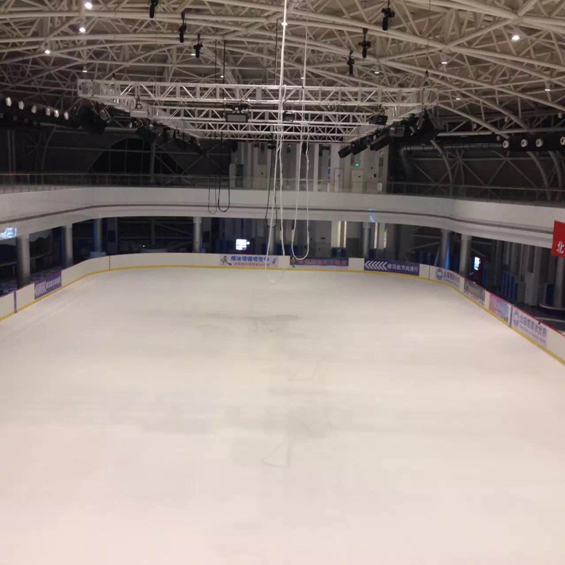
-
3) The Ice Master Team then sprays on the third layer. This layer, which is only 1/16 of an inch thick, acts a sealer for the white paint.


-
4) The Ice Master Team paints the hockey markings (the lines, creases, face-off spots and circles) and the team and sponsors logos on top of the third layer.


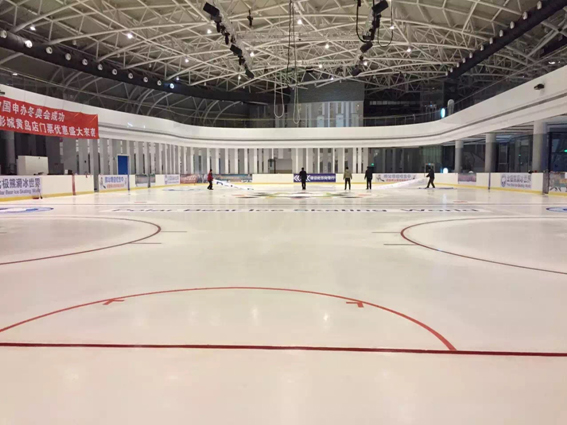
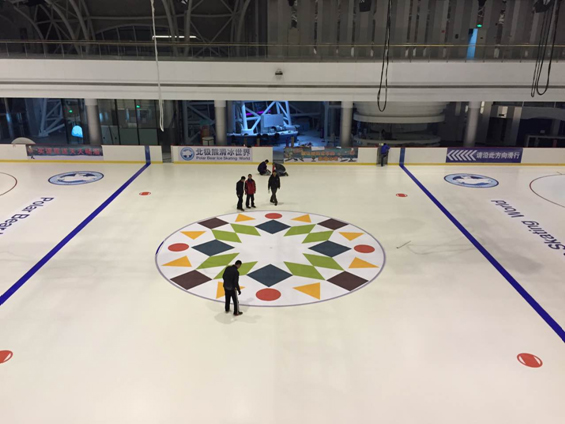
-
5) Once the markings and logos are in position, it needs to be sealed with sprayed water and let them dry. Then the Ice Master Team will spray 2 other thin layers to complete sealing the logos and lines.
The Ice Master Team slowly applies the remaining 10,000 gallons, layer by layer with a flooding hose at a rate of 500 to 600 gallons per hour until the remaining layer is complete. That means 15 to 20 hours for the final layer. Each of those layers is allowed to freeze before the next 500 to 600 gallons are applied.
The less water is put on the floor at one time, the better the ice will freeze, and we will have solid and bonded layers.

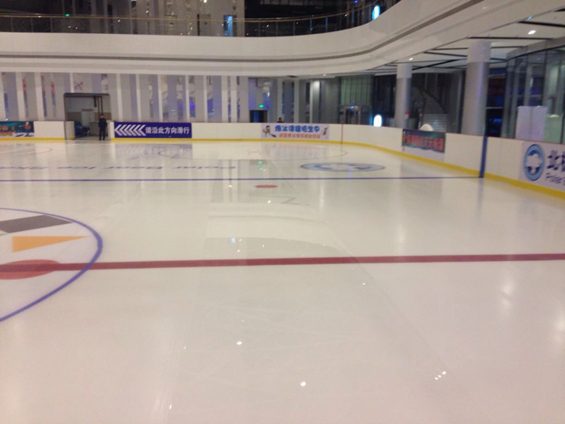
-
6) The last step is to make the surface smooth by using an ice resurfacer machine, by scraping and leveling the top surface.
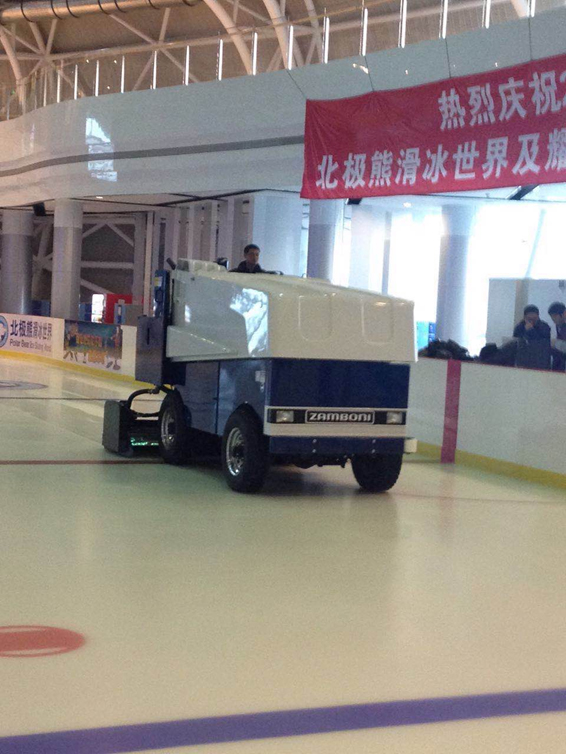
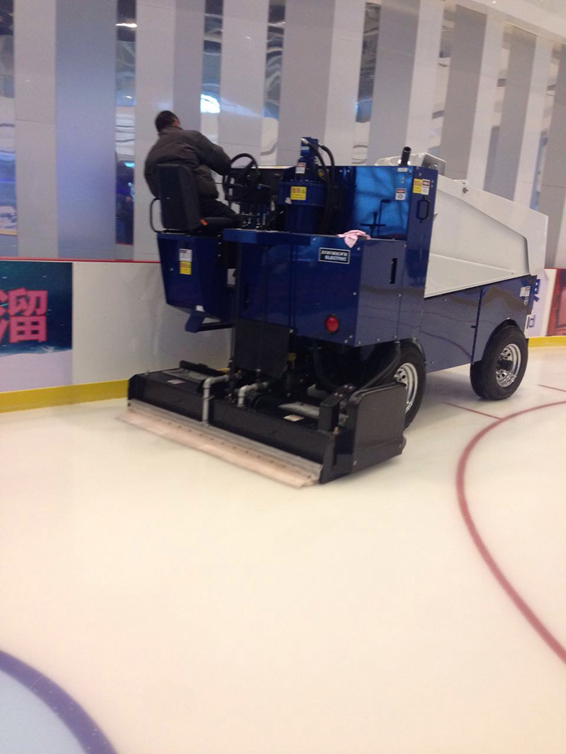
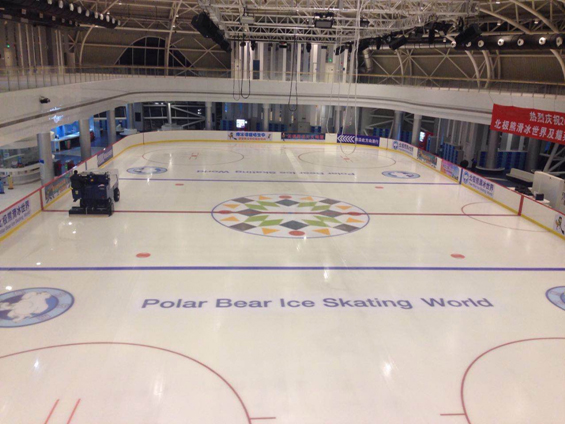
-
7) Now the ice is in perfect condition and the ice rink is ready for use.
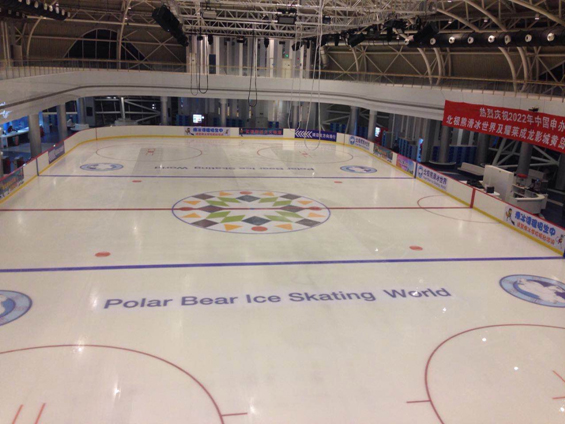
More than 15 years producing the best ice quality
When creating a new ice surface there are several aspects to consider in order to obtain the best results. Throughout many years of experience, CTC has developed the best practices for ice making, being recognized for producing the superior ice quality.
Indoor environment conditions are very important; the ice floor needs to be maintained at about -8~-9 C for better freezing and ice painting. When the ice is at rest the temperature can be increased at -6 ~-7 C. The building temperature should be maintained at about 18 ~20 C, and the indoor humidity at about 30%~40% for ideal conditions. The ice surface can vary greatly with a temperature change as small as 1~2 degree. If the ideal conditions can not be reached, the experience of the Ice Master Team will be crucial to judge and readjust the ice making process according to the job site condition. In the case that the humidify is too high (above 65%), it is not recommended to proceed with the ice making process, because the ice painting will be damaged, there will be fog, and condensation on the ceiling, and ice bumps will be created over the ice surface, making difficult to have good ice.
The type of water also can change conditions. For example, ice made with water that contains dissolved alkaline salts may have a sticky feel to it and will dull skate blades. To counteract these problems, it is recommended to use purifiers or add chemical conditioners to tap water.
Now you know how CTC makes it work.

